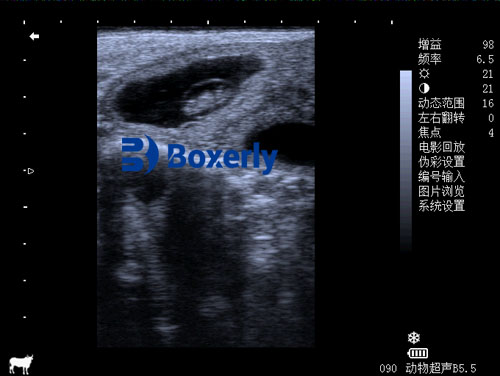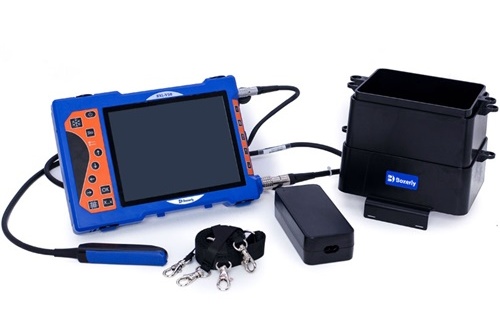As a livestock farmer, ensuring that cows conceive and carry their pregnancies successfully is one of the most critical aspects of reproductive management. For decades, farmers have relied on visual observation, palpation, and hormone testing to confirm pregnancy in cows. While these traditional methods have their merits, they often fall short in terms of accuracy, early detection, and practicality for large-scale operations. This is where veterinary ultrasonography steps in as a game-changer. En este artículo, I’ll walk you through my first experience using a veterinary ultrasound scanner for cow pregnancy checks, sharing both the learning curve and the unexpected benefits I encountered. I’ll also reflect on how farmers in other countries use this technology, and why it’s quickly becoming a global standard in herd management.

Understanding the Basics: What is Veterinary Ultrasound?
Ultrasound scanning, also called ultrasonography, is a non-invasive diagnostic tool that uses high-frequency sound waves to produce real-time images of internal organs and structures. In the context of cattle reproduction, ultrasound enables veterinarians and trained farmers to visualize the uterus and ovaries of the cow. This allows them to identify pregnancy, estimate gestational age, check for twins, detect reproductive tract abnormalities, and monitor fetal development.
Unlike rectal palpation, which relies heavily on the skill and experience of the person performing the exam, ultrasound imaging provides visual confirmation, reducing the risk of misdiagnosis. Most importantly, it can be used as early as 25–30 days post-insemination, far earlier than most traditional methods.
My First Time Using Ultrasound: What I Expected vs. What I Experienced
I initially approached the idea of using ultrasound with some hesitation. Would it be difficult to learn? Would it require a vet every time? Could it be cost-effective for a medium-sized farm like mine? These questions echoed what many first-time users around the world wonder.
After purchasing a portable veterinary ultrasound unit and receiving a brief training session from a local technician, I was surprised by how intuitive the process was. The machine featured a clear display, user-friendly controls, and a rugged design suited for barn conditions. I used a convex rectal probe, which is most commonly used for bovine reproduction, and applied a generous amount of ultrasound gel to ensure good contact.
At first, distinguishing structures like the uterine horn, follicles, and corpus luteum was challenging. But with repeated practice and some assistance from reference images, I gradually gained confidence. The first unmistakable image of a small, fluid-filled gestational sac within the uterus was a moment of amazement—clear proof of life, weeks before any external signs would have shown.
Global Insights: How Farmers Around the World Use Ultrasound
In North America and parts of Europe, ultrasonido scanning for cow pregnancy is a well-established practice. According to the Beef Cattle Institute, más que 60% of U.S. beef producers who use artificial insemination also incorporate ultrasound scanning for pregnancy diagnosis. The main advantages cited include early pregnancy confirmation, improved reproductive scheduling, and identification of open (non-pregnant) Vacas, which can then be re-bred or culled promptly.
In Australia and New Zealand, ultrasound is often used alongside body condition scoring and reproductive history to develop tailored herd health programs. In Latin America, where beef production is rapidly industrializing, ultrasound is gaining popularity as a means to improve herd fertility and maximize calving intervals.
Many international experts emphasize that early pregnancy detection isn’t just about knowing whether a cow is pregnant—it’s about managing the entire reproductive cycle. With tools like ultrasound, farmers can identify repeat breeders, diagnose uterine infections, and even monitor embryo loss, all of which significantly impact productivity.

Advantages I Found After Using Ultrasound
1. Early and Accurate Pregnancy Diagnosis
With ultrasound, I could confirm pregnancies as early as day 28, compared to day 45–60 with palpation. This allowed me to rebreed open cows faster and avoid unnecessary feeding costs.
2. Non-Invasive and Cow-Friendly
The procedure was quick and caused minimal discomfort to the cows. There were no needles or stress-inducing restraint methods, making it more animal-welfare-friendly.
3. Real-Time Information
One of the most striking benefits was seeing real-time images. Unlike palpation, where you rely on feel, ultrasound provides immediate visual data. I could see the embryo, heartbeat, and even fetal movement in later stages.
4. Identifying Twins and Reproductive Issues
In one case, I discovered a cow carrying twins—a fact I would have missed without ultrasound. In another, I noticed fluid buildup indicating a possible uterine infection. These insights allowed me to manage care more proactively.
Learning Curve and Practical Tips
Like many farmers, I learned by doing. But here are a few tips that helped me and are echoed by other first-time users around the world:
-
Start with proper training: Even a few hours with a knowledgeable vet or technician can make a big difference.
-
Use enough gel: Good contact between the probe and the tissue is essential for a clear image.
-
Practice scanning non-pregnant cows first: This helps you get familiar with the normal anatomy before looking for signs of pregnancy.
-
Label and record findings: Keeping digital records of scans helps track individual animals and improves decision-making over time.
Technology Choices: Portable and Farm-Ready
There are many models of veterinary ultrasound scanners on the market today. For beginners, especially those managing farm environments, un duradero, impermeable, battery-powered unit with a high-resolution display is ideal. Some farmers in Canada and Germany I spoke with recommended models that support both convex and linear probes for greater versatility.
In future use, I plan to invest in a Doppler-compatible machine to check for fetal blood flow, which can help assess fetal viability in late gestation. Some advanced devices, like the BXL-V50, are designed with long battery life, Compatibilidad con múltiples sondas, and high-definition imaging tailored for large and small livestock alike.

BXL-V50 Portable ultrasound machine
Economic Impact: Is It Worth the Investment?
One of the most common questions is: does using ultrasound pay off? In my experience—and supported by international case studies—the answer is yes.
When you consider the cost of feeding a non-pregnant cow for months without a calf to show for it, the return on investment becomes clear. In countries like the U.S., studies show that using ultrasound in reproductive programs can increase pregnancy rates by 5–10% and reduce the calving interval by weeks. For farms with dozens or hundreds of cows, this can mean tens of thousands in added revenue per year.
Future Trends: What’s Next in Ultrasound Reproduction Monitoring
Veterinary ultrasound is evolving rapidly. AI-enhanced imaging, cloud-based scan storage, and mobile app integration are making these systems even more accessible and powerful. Portable scanners are being integrated with herd management software to allow real-time analysis and long-term tracking of reproductive performance.
Furthermore, global demand for ethical and sustainable meat production is encouraging the use of non-invasive tools like ultrasound. More countries are setting animal welfare standards that favor such technologies.
Conclusión
My first experience using veterinary ultrasound for cow pregnancy checks was eye-opening, both literally and figuratively. What started as a hesitant experiment quickly became a staple of my herd management routine. I now rely on this technology not only to detect pregnancies but to make smarter decisions about breeding, feeding, and herd culling.
From North America to Europe to Asia, veterinary ultrasound is transforming cattle reproduction. Whether you manage 10 cows or 1000, the ability to see inside the animal, in real-time, is a powerful asset. As the technology becomes more affordable and easier to use, more farmers around the world are likely to adopt it—and for good reason.
By integrating this tool into our daily practices, we’re not just improving reproductive success. We’re improving animal welfare, saving costs, and building a more sustainable future for livestock farming.
References:
-
Whitaker, D. A., & Smith, E. (2021). Veterinary Ultrasonography in Food-Producing Animals. Journal of Veterinary Imaging.
-
Beef Cattle Institute. (2023). Use of Ultrasound for Growth Evaluation in Cattle. Retrieved from: https://www.beefcattleinstitute.org/ultrasound-growth
-
Purdue University Extension. (2022). Ultrasound Pregnancy Testing in Beef Cattle. Retrieved from: https://extension.purdue.edu
-
National Animal Supervisión del estado System (NAHMS). (2021). Reproductive Technologies in the U.S. Beef Industry. USDA. Retrieved from: https://www.aphis.usda.gov/animal_health/nahms/